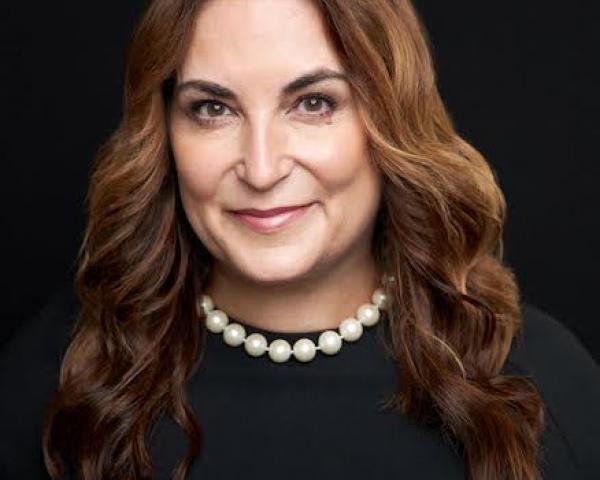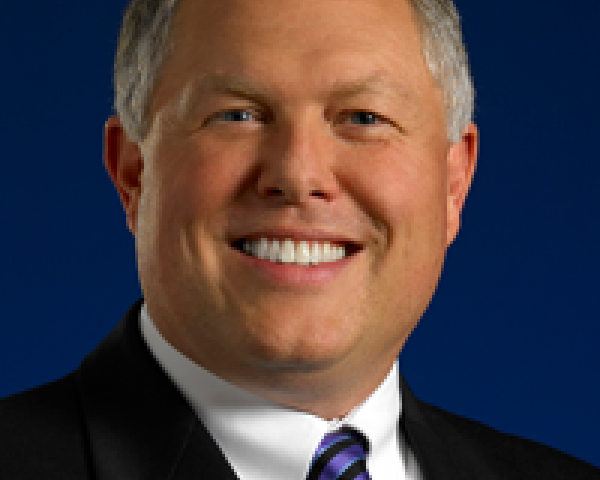Many stakeholders in the workers’ compensation industry have been engaged in conversations regarding opportunities to improve the workers’ compensation system. The perspective of injured workers has been lacking in these conversations. This perspective has been difficult to obtain because there really are no respected “injured worker” advocacy groups such as there are in the group health setting. Attorneys and unions are not the true voice of the injured worker – they have their own sets of priorities. The voice of the injured worker is an important one. It will help us gain a deeper understanding of the challenges in the workers’ compensation setting as well as give us greater empathy for what they are facing.
At the 2016 Comp Laude Gala, the Alliance of Women in Workers’ Compensation sponsored a session featuring injured workers talking about their struggles. It was an extremely powerful and moving experience that left few dry eyes in the packed room. In this article, we attempted to capture the essence of this session. Our goal is for this information to be used to help us better understand the obstacles faced by injured workers so that we can be better advocates for them and, ultimately, achieve better outcomes on claims.
The Participants
The participants included an injured worker in recovery from his dependency on opioids, regaining his life 14 years after his injury. Another, with two prosthetic legs, continues working and leaves a legacy for the workers’ comp community. A third participant was a woman with incomplete quadriplegia, who started a business helping others with chronic pain.
We’ve heard these stories before. The question is, however, what makes these cases different? How have these injured workers been able to get back to function and work despite debilitating conditions that leave others homebound and drug dependent forever?
All three of these injured workers have unique personalities that may have contributed to their successes. But the one thing they have in common that was a deciding factor for all was support, positivity and encouragement from people around them – especially those in the workers’ comp industry. The stories they shared should serve as lessons for the workers’ comp community to illustrate that what we say and do makes a difference. It sends a message that by taking responsibility for our actions, words and decisions, we can truly make a difference for injured workers and our companies.
The Stories
Kenny: “I had never hurt my back in my life, but I twisted it lifting something.” That was in 2000, before his 40th birthday. By 2014, Kenny had undergone two surgeries, multiple implants, epidurals, a myelography – which he described as “the worst thing in my life” – and was prescribed a cocktail of various opioids, including a fentanyl patch and oxycontin. He had been told by a medical professional in a Florida hospital that he would likely be dead in two years from all the medications he was taking.
“Your mind just goes,” he said. “You’re useless. Suicide – it’s right there.” Two case managers and several years later, things were no better. Though he wanted to work again, the back fusions on L4 and L5 left him unable to walk and the meds left him in a zombie-like condition.
“We were young. It was scary,” said Kenny’s wife, Karen. “I lost my husband, my boys lost their dad.”
See also: 3 Reasons to Talk With Injured Workers
Kenny and Karen’s story might have continued that way forever, if not for the arrival of their third caseworker 12 years after the initial injury. “It was like she flew in on angel wings,” Karen said. “She took the time to get to know him. Nobody else did.”
At the end of their very first conversation, the new caseworker promised she would get Kenny fishing again – one of his favorite pastimes, and said she would go with him. “That’s a really big deal,” Karen said.
But the road ahead was not to be an easy one. The caseworker’s plan to send Kenny to a Florida hospital for treatment didn’t sit well; at least, not with Kenny. It wasn’t until the following weekend during a family anniversary party that his sisters, wife and sons convinced him to go along with the treatment plan.
At the hospital, he received rehab, biofeedback and the care he truly needed to be able to function again. Six weeks later he was no longer taking the hydromorphine, or the fentanyl, or the oxycontin, or the percocets, or the duragesic patches.
Three years later he is still off the medications, including aspirin. He goes to the gym daily to walk, do light stretching and exercise.
“I’d tell anyone, ‘Get off the drugs; that’s 50 percent of your pain,’” he said. “Your body will help heal you.”
For Kenny, a single individual was able to change his life. A physician had previously told him he ‘was as good as he was going to get.’ The first case worker was “distasteful,” and the second never showed up. But the third caseworker had a different approach.
“It just really matters what you say — as a doctor, nurse or case manager. And that was the big difference for us,” Karen said. “She never said anything negative. She always said, ‘we’re going to do that,’ ‘we’re going to get you to that,’ ‘we’re going to go here, it’s going to be great,’ And we believed it.”
Becky: It’s been more than a decade since Becky was lying in a hospital bed with a broken neck, two collapsed lungs, all of her ribs on one side broken, and a broken clavicle. A work-related auto accident rendered her ‘an incomplete quadriplegic.’
“My spinal cord was not quite severed; damaged, but not severed,” she explained. “My left side has partial paralysis. My right side looks normal, but I can’t feel hot or cold, sharp or dull [sensations].”
Because her body no longer functioned the way it had before the accident, she had to learn how to walk again and to function with one hand — since the other does not work. Then, two years later, she developed burning nerve pain from the neck down.
“That was the darkest time for me,” she said. “They tried all kinds of medications. I was depressed, I wasn’t sleeping at night, I stopped exercising, I stopped having any kind of positivity. It was a really, really dark time.”
Becky was subsequently diagnosed with a syrinx — a fluid-filled cyst in her spinal cord. In her case, it is essentially inoperable. Becky reluctantly agreed to go to a functional restoration program in California, although she wondered how that could alleviate her pain.
“I discovered that pain is an experience, not a sensation. And I get to decide what it means,” she said. “And when the fear goes away, and the negativity goes away, the pain comes down. And when my activity goes up, eventually I’m less sore and I’m better. And life could still be good.”
Becky has an active life these days. She and her husband, Barry, have started a company to help people with long-term chronic pain. It is something in which she is intimately familiar.
“I still have the syrinx, I still have burning nerve pain from my neck down, it just doesn’t have me,” she said. “I don’t take any meds. I live a very good, a very functional life.”
Dwight: Despite losing both legs from two separate work-related incidents, Dwight became a force within the workers’ comp community. He was tired of people looking at his prosthetic legs and decided to give them something special to see. He started creating outlandishly colored hand-painted sneakers – first for himself, then for others. These gained notice in the workers’ compensation community when they were worn by the late David DePaolo, founder of WorkCompCentral, at numerous industry events.
Tragically, Dwight passed away in March of this year from heart-related issues, but his positivity and energy are not forgotten.
Dwight’s story began seven years ago, when he picked up a staph infection while working in Hong Kong. By the time he returned to Los Angeles, his left leg was dead and had to be amputated.
He returned to work with the one prosthetic leg, inspecting some of the world’s tallest buildings. “I loved what I was doing,” he related.
Three and a half years later, Dwight suffered another industrial accident, leading to the loss of his other leg. Before his passing, Dwight said his recovery was going, “Pretty good. I started playing golf again.”
Having grown up in the Del Mar, California area beach community, he was an avid surfer. “I surfed every day,” he said. “So I got water [prosthetic] legs to surf.” He also had special legs made for running and was doing stained glass artwork for restaurants in the San Diego area.
In addition to his hobbies, the father of seven opened Soule Innovations, a business that creates brightly-colored sneakers for people. He and his wife Debbie also donated the shoes to other amputees and war veterans.
The Lessons
The stories are different. But the messages from these and other injured workers are the same: positivity, peer support, and advocacy are imperative to recovery.
Attitude: “After an injury the person dealing with us has to be positive,” Dwight explained. “We’re trying our best, but on the other hand, on the other end of the line, tell me everything’s going to work; tell me you care. It’s so important.”
The attitudes of those involved with an injured worker are vital in determining the outcome. Karen tells the story of seeing a medical provider who walked into the exam room, looked at his information and told Kenny “you’re as good as you’re going to get.” On the way home from the appointment, Kenny was crying in the car and asking, “This is it?” Those and other negative conversations kept Kenny in a disability mindset until his third caseworker arrived on the scene.
See also: A Better Reality for Injured Workers
Becky related her experience when she was first in the hospital. “As soon as they took the ventilator tube out of me I asked, ‘What’s the prognosis?’ [The doctor] just looked at me and said, ‘You’ll never be normal.’ It was true. I cried after that. Couldn’t move, couldn’t scratch my nose but I didn’t like that answer,” she said. “I asked another doctor the next day. He smiled and said ‘you’re going to walk again.’”
The positive reframing of the message made a difference in Becky’s attitude and ultimately, her outcome. Much of Becky’s and Barry’s work with chronic pain patients involves reframing the message.
When someone asked what she focuses on while feeling burning nerve pain from the neck down, she responded “You focus on the neck up. There’s always something we can focus on that is ok,” she said. “If everybody’s on the same page – the provider, case manager, adjuster – even if it’s just one person that will speak some kind of positive into your experience, it makes a huge difference.”
Nevertheless, the message must be truthful in addition to being positive. “One thing that used to really get to me is if someone said, ‘we’re going to bring you back to normal,’” Dwight said. “If I’m going to be normal, we’re going to cut everybody’s legs off and then we’ll be normal. Normal for me would be impossible. It has to be positive. We all have to work on ourselves.”
Advocacy: Peer advocacy is also crucial to a positive outcome. Often the injured worker’s only support is his family, and that can be volatile.
“It’s a powerful journey to be a spouse of an injured worker,” explained Barry. Fear creeps in, he said, which can impede recovery. “One of the things that I experienced is that it is really easy to find yourself defaulting to that workers’ comp check that’s coming in the mail. It’s almost a feeling like, ‘you’ve got to stay injured, you’ve got to stay dependent.”
For injured workers and their families, showing support and caring can make the difference between an injured worker staying dependent on the system or recovering.
“It begins with positivity, looking at what you have rather than what you’ve lost. You have to celebrate what you have, not dwell on what you lost,” Barry said. “I coach family members of people going through pain and that’s what I tell them all the time. We spend a lot of time talking about grieving that loss. At the same time, grief is also acceptance of what you’ve lost and then celebrating what you have. We spend a lot of time on that.”
Becky empathizes with her clients who are going through the pain. “We specialize in working with the difficult cases,” she said. “We want to give them hope and support and all they need to be self-managers instead of passive patients.”
Hearing and believing what the injured worker says is a crucial part of advocacy. In Becky’s case, her diagnosis of ‘incomplete quadriplegia’ may have expedited the care she received. But a case like Kenny’s, with a questionable diagnosis, is more vague and complex. There can be a stigma attached that can leave the injured worker feeling alone and forgotten.
“If somebody’s on drugs for two or three years and nothing is happening, you’ve got to stop it then,” he said. “Thirteen or 14 years is terrible. You go to these doctors and say ‘yes, my back’s killing me.’ They write you a prescription and that’s it. It’s hard.”
Kenny spoke of the family-like support he received at the rehab facility as being key in his recovery. For the 12 years before that program, he had only his wife.
“If somebody is alone and disabled, I don’t even know how they cope,” Karen said. “Because he was in such a stuporish state that, if I wasn’t there or later on, when [the case worker] came into our lives, if she wasn’t there, he’d probably be dead right now.”
Dwight likewise found good support from his provider.
“My doctor gave me two options: ‘put you in a wheelchair and give you enough drugs, or get up off your ass and do something.’” He chose the latter.



